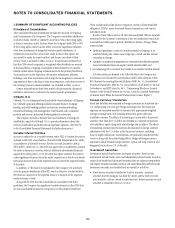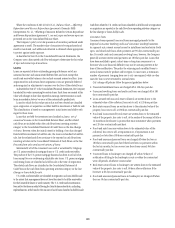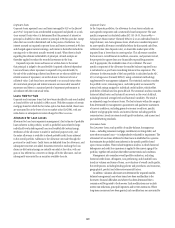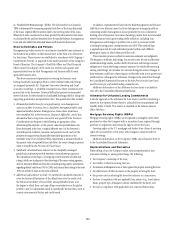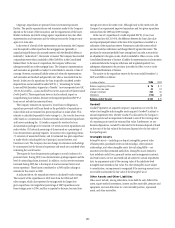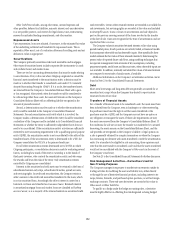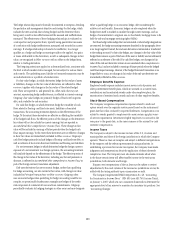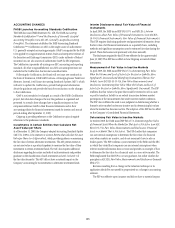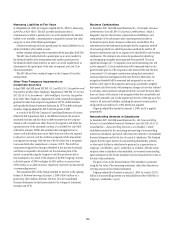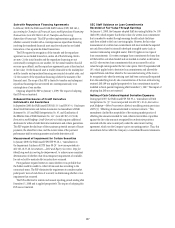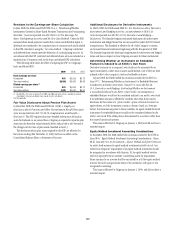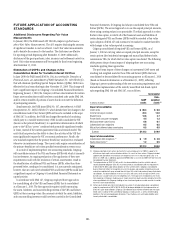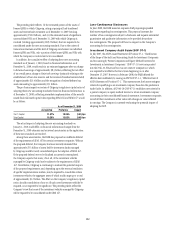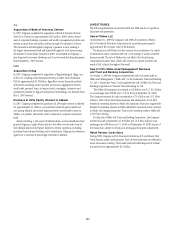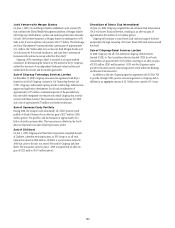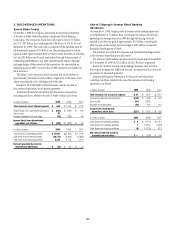Citibank 2009 Annual Report Download - page 146
Download and view the complete annual report
Please find page 146 of the 2009 Citibank annual report below. You can navigate through the pages in the report by either clicking on the pages listed below, or by using the keyword search tool below to find specific information within the annual report.136
Measuring Liabilities at Fair Value
As of September 30, 2009, the Company adopted ASU No. 2009-05, Measuring
Liabilities at Fair Value. This ASU provides clarification that in
circumstances in which a quoted price in an active market for the identical
liability is not available, a reporting entity is required to measure fair value
using one or more of the following techniques:
A valuation technique that uses quoted prices for similar liabilities (or an
identical liability) when traded as assets.
Another valuation technique that is consistent with the principles of ASC 820.
This ASU also clarifies that both a quoted price in an active market for
the identical liability at the measurement date and the quoted price for
the identical liability when traded as an asset in an active market when no
adjustments to the quoted price of the asset are required, are Level 1 fair
value measurements.
This ASU did not have a material impact on the Company’s fair value
measurements.
Other-Than-Temporary Impairments on
Investment Securities
In April 2009, the FASB issued FSP FAS 115-2 and FAS 124-2, Recognition and
Presentation of Other-Than-Temporary Impairments (FSP FAS 115-2) (now
ASC 320-10-35-34, Investments—Debt and Equity Securities: Recognition
of an Other-Than-Temporary Impairment), which amends the recognition
guidance for other-than-temporary impairments (OTTI) of debt securities
and expands the financial statement disclosures for OTTI on debt and equity
securities. Citigroup adopted the FSP in the first quarter of 2009.
As a result of the FSP, the Company’s Consolidated Statement of Income
reflects the full impairment (that is, the difference between the security’s
amortized cost basis and fair value) on debt securities that the Company
intends to sell or would more-likely-than-not be required to sell before the
expected recovery of the amortized cost basis. For available-for- sale (AFS)
and held-to-maturity (HTM) debt securities that management has no
intent to sell and believes that it more-likely-than-not will not be required
to sell prior to recovery, only the credit loss component of the impairment
is recognized in earnings, while the rest of the fair value loss is recognized
in Accumulated other comprehensive income (AOCI). The credit loss
component recognized in earnings is identified as the amount of principal
cash flows not expected to be received over the remaining term of the
security as projected using the Company’s cash flow projections and its
base assumptions. As a result of the adoption of the FSP, Citigroup’s income
in the first quarter of 2009 was higher by $631 million on a pretax basis
($391 million on an after-tax basis), respectively, and AOCI was decreased by
a corresponding amount.
The cumulative effect of the change included an increase in the opening
balance of Retained earnings at January 1, 2009 of $665 million on a
pretax basis ($413 million after-tax). See Note 16 to the Consolidated
Financial Statements for disclosures related to the Company’s investment
securities and OTTI.
Business Combinations
In December 2007, the FASB issued Statement No. 141(revised), Business
Combinations (now ASC 805-10, Business Combinations), which is
designed to improve the relevance, representational faithfulness, and
comparability of the information that a reporting entity provides in
its financial reports about a business combination and its effects. The
statement retains the fundamental principle that the acquisition method
of accounting (which was called the purchase method) be used for all
business combinations and for an acquirer to be identified for each business
combination. The statement also retains the guidance for identifying
and recognizing intangible assets separately from goodwill. The most
significant changes are: (1) acquisition costs and restructuring costs will
now be expensed; (2) stock consideration will be measured based on the
quoted market price as of the acquisition date instead of the date the deal
is announced; (3) contingent consideration arising from contractual
and noncontractual contingencies that meet the more-likely-than-not
recognition threshold will be measured and recognized as an asset or
liability at fair value at the acquisition date using a probability-weighted
discounted cash flows model, with subsequent changes in fair value reflected
in earnings; noncontractual contingencies that do not meet the more-likely-
than-not criteria will continue to be recognized when they are probable and
reasonably estimable; and (4) the acquirer will record a 100% step-up to fair
value for all assets and liabilities, including the minority interest portion,
and goodwill is recorded as if a 100% interest was acquired.
Citigroup adopted the standard on January 1, 2009, and it is applied
prospectively.
Noncontrolling Interests in Subsidiaries
In December 2007, the FASB issued Statement No. 160, Noncontrolling
Interests in Consolidated Financial Statements (now ASC 810-10-45-15,
Consolidation—Noncontrolling Interests in a Subsidiary), which
establishes standards for the accounting and reporting of noncontrolling
interests in subsidiaries (previously called minority interests) in consolidated
financial statements and for the loss of control of subsidiaries. The Standard
requires that the equity interest of noncontrolling shareholders, partners,
or other equity holders in subsidiaries be presented as a separate item in
Citigroup’s stockholders’ equity, rather than as a liability. After the initial
adoption, when a subsidiary is deconsolidated, any retained noncontrolling
equity investment in the former subsidiary must be measured at fair value at
the date of deconsolidation.
The gain or loss on the deconsolidation of the subsidiary is measured
using the fair value of the remaining investment, rather than the previous
carrying amount of that retained investment.
Citigroup adopted the Standard on January 1, 2009. As a result, $2.392
billion of noncontrolling interests was reclassified from Other liabilities to
Citigroup’s stockholders’ equity.


